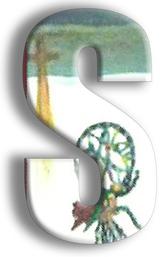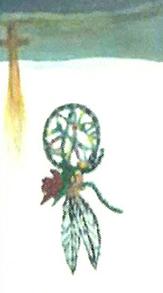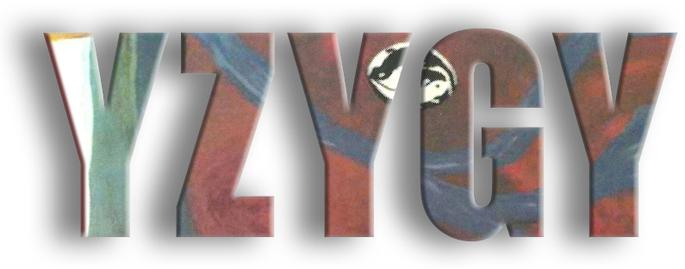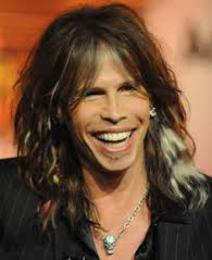MEMOIR LOGO CONCEPT: The aleph and a Sufi mystic inspired my creation and design of the syzygy logo, which I initially based on the symbolism of the yin and yang.
But the concept expanded when I first saw the aleph in Judith Cornell’s
Mandala Healing Kit, My inexplicable attraction to it led me to incorporate it into my logo before I knew what it meant.
I later read that the “Aleph (the first letter of the sacred Hebrew alphabet) embodies the primordial, divine potential of the universe. ... Aleph contains all the universe’s potential and all of its emptiness simultaneously. Aleph represents a dynamic process of movement from unity to diversity and back to unity,” Jennifer Judelsohn, Songs of Creation.
And the mystic poet Rumi inspired me to use the fire and water concept after I read The Question. Here is an excerpt:
“The presence is there in front of me. A fire on the left, a lovely stream on the right.
One group walks toward the fire, into the fire. Another toward the sweet flowing water.
No one knows which are blessed and which are not.
Whoever walks into the fire appears suddenly in the stream.
A head goes under water, and that head pokes out of the fire.”
LOGO ART: Cropped fire and water images from Free Images.
LOTUS LOGO: In spiritual and religious literature, “the lotus is a symbol for the macrocosm and the microcosm, the universe and man. The lotus represents the divinity of the cosmos as well as the divinity of man.
The lotus is the center of the infinite, omnipresent consciousness which connects with the consciousness of the universe. Through the intuition, one of man’s divine gifts, the spiritual student can see the infinite, omnipresent consciousness as the lotus flower within himself.”
LOTUS ART: Courtesy
Homestead, my website service provider. (Temporary art while I design of my own lotus logo.)
TO DOWNLOAD FREE SAMPLE CHAPTER OF SYZYGY:
THE MEMOIR
TO BUY MEMOIR
(Thru Amazon)
THE MEMOIR
CROSSING THE BRIDGE TO SELF
THE WEBSITE
THE MEMOIR
NEW!
thinking got you here in a locked ward?’ And I went back to my room and cried for about an hour. To think that that was true.” [Becoming conscious of shadow contents.]
During the interview, Tyler also talked about an amazing synchronicity: The doctor who checked him into rehab was the same guy who collected the money at the door all those years ago the night Aerosmith first aired on the radio, a synchronicity that assured Steven Tyler that he was where (and with whom) he belonged. “Like, what are the chances?” he said. For him, the synchronicity was like a wink and a nod, confirming for him that meeting this particular doctor, Dr. Harry Haroutunian, on that particular night was providence. He said, “Once you get into spirituality—do you ever watch the clock when it says 12:12 or 11:11 or 3:33, and suddenly you see it more after that—spirituality is like that. Once you notice it, it starts coming into your life.” (The entire interview is posted on Dr. Oz’s website.)
Just as Steven Tyler finds that the 12-step recovery program for alcoholics provides him a suitable venue for his process of individuation, you might find that it is a suitable venue for yourself as well. Or you might find that one or more of the tools and techniques discussed elsewhere on this website suit your special needs. Only through exploration of your own psyche will you begin to find what best serves you, what resonates for you, what you wish to embrace, and how you wish to proceed on your unique journey. ♂ ♀
“The actual process of individuation—the conscious coming-to-terms with one’s own inner center (psychic nucleus) of Self—generally begins with the wounding of the personality and the suffering that accompanies it. This initial shock amounts to a sort of ‘call,’ although it is not often recognized as such. On the contrary, the ego feels hampered in its will or its desire and usually projects the obstruction onto something external. That is, the ego accuses God or the economic situation or the boss or the marriage partner of being responsible for whatever is obstructing it” [1].
Your process to conscious awareness on unique path
Superstar Steven Tyler goes public about his rehabilitation on the 12-step program on The Dr. Oz Show, where he shared his personal story of individuation—but he didn’t call it that.
Individuation, that is, Self-discovery, is not a direct path, it’s a process. It’s a spiral around the Self. It is your yellow brick road. You may utilize any number of techniques and applications and tools in any combination that appeals to you on any given day, as this is your one-of-a-kind crossing of the bridge to Self.
Initially, I thought the process of individuation was a straight and narrow path: Become aware of synchronicities, explore your psyche through individuation—as if it were one course of action—could develop in countless ways and among people of all walks of life, and among people who had never even heard of Carl Jung, much less the process of individuation.
As I listened to the rock star legend describe his difficult rehabilitation process while at the Betty Ford Center, where Tyler first began the 12-step program, I had a revelation: Steven Tyler was describing his very own process of individuation, although most people—including him—probably wouldn’t call it that.
The following Steven Tyler quotes from his interview with Dr. Mehmet Oz depict his very personal progression toward self-discovery, an interview I am sure was another, perhaps painful, step in his growth process. And his honesty and his courage are inspiring.
Tyler: “I’m not here to tell you that you shouldn’t drink or smoke pot or anything. I’m only here to say I did it so much I couldn’t stop. And then I’d ask myself, and face myself, to see. Why couldn’t I stop? Is it just that I loved it, or did it steal me like a crook and have me by the short hairs?” [Self-Analysis and Introspection.]
SOURCE
[1] M.-L.von Franz, “The Process of Individuation.” C. G. Jung, Man and His Symbols (p. 166).
Marie-Louise von Franz, Jungian analyst, whose analyst was Jung
©1955–2019 Syzygy: Crossing the Bridge to Self. All Rights Reserved.
Tyler: “Because when you get as bad as most addicts do, and they are on their knees, your life’s gone, what you knew of it. And the only life you got is going back and hitting whatever it was you were on. You think that’s your life when in fact it isn’t. …It’s serious when you lose ... your children, your wife, your band, your job, and you’ll never understand why because you’re an addict. You can’t figure that out.” [Unrecognized manifests as “why me.”]
Tyler (speaking about hitting rock bottom]): “And everyone is looking outside for the [cause of the] problem.” He stopped and looked Dr. Oz in the eye and, with a knowing smirk, he said, “It’s an inside job, you know.” [Taking responsibility.]
Tyler: “I don’t think I could think of one moment [when I realized I needed help with my addiction], but I know of one moment that crippled me. Doctor was looking at me. And I was yakking off at the mouth. I had just been locked in a locked unit [at the] rehabilitation center. And he goes, ‘Will you stop talking?’ I was talking to another artist that was down the hole, and we started talking war stories ... when the therapist looked at me and goes. ‘You realize that your best
JUNG’S ADVICE TO PATIENT INFLUENCED FOUNDING OF AA
Jung indirectly influenced the establishment of Alcoholics Anonymous and its Twelve- Step recovery program back in 1930, after treating Rowland Hazard III, an American visiting from abroad, for chronic alcoholism, with little progress. Jung eventually told Rowland that curing his alcoholism was beyond known medical and psychiatric treatment, hinting that short of a spiritual awakening, Rowland’s alcoholism was hopeless.
When Rowland returned to America, he took Jung’s advice seriously, and literally. He joined an evangelical church, where his religious experience there provided him what he needed to begin his first period of sobriety. In 1934, when Rowland heard that one of his boyhood friends, Ebby Thatcher, was to be institutionalized because of his drinking, Rowland intervened, pledged Ebby’s sobriety, and led him to the Oxford Group, an evangelical movement at the time, where Ebby began his first period of sobriety. Ebby then related his experience (recounting Jung’s advice to Rowland) to his drinking buddy, Bill Wilson, who also found it difficult to refrain from alcohol. The sobriety of his friend Ebby made an impact on Bill, and he would later base the co-founding of Alcoholics Anonymous and the Twelve Step program on Jung’s suggestion, that is, the need for spiritual development to offset the craving of alcohol.
Bill Wilson later wrote to Jung, informing him of this chain of events and thanking Jung for his critical insight, which William said became the cornerstone of the founding of Alcoholics Anonymous. Jung responded to Wilson that same week. In part, Jung’s letter said, “The reason that I could not tell [Rowland H.] everything was that those days I had to be exceedingly careful of what I said. I had found out that I was misunderstood in every possible way. Thus I was very careful when I talked to Rowland H. But what I really thought about was the result of many experiences with men of his kind. His craving for alcohol was the equivalent, on a low level, of the spiritual thirst of our being for wholeness, expressed in medieval language: the union with God. How could one formulate such an insight in a language that is not misunderstood in our days?”
According to the Big Bunch Group, Bill Wilson treasured that letter from Jung: “Bill kept the Jung letter as a talisman. In time it was copied, read at meetings, reprinted in the Grapevine, but the original stayed in his top desk drawer and, sometimes, even though he knew it by heart, he would open the drawer, look down at the signature and reread a phrase.”
“You see,” Jung had written in the closing of his letter, “alcohol” in Latin is spiritus and you use the same word for the highest religious experience as well as for the most depraving poison. The helpful formula therefore is: spiritus contra spiritum.” Loosely translated: a spiritual experience to counter addiction to the spirits. ♂ ♀
Sources: New World Enclopedia; Big Bunch Group; and Ernest Kurtz, Not God: A History of Alcoholics Anonymous.












